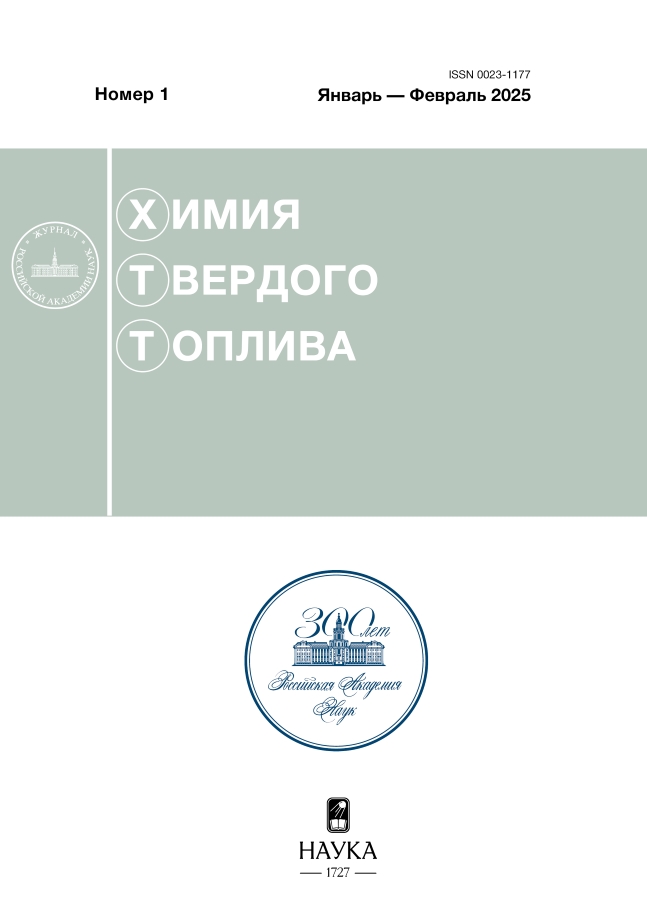Changes in the molecular structure of asphaltenes during cracking of tars in the presence of calcium acetate
- Autores: Goncharov A.V.1, Krivtsov E.B.1
-
Afiliações:
- FGBUN Institute of Petroleum Chemistry SB RAS
- Edição: Nº 1 (2025)
- Páginas: 59-66
- Seção: Articles
- URL: https://filvestnik.nvsu.ru/0023-1177/article/view/684053
- DOI: https://doi.org/10.31857/S0023117725010086
- EDN: https://elibrary.ru/KTRSQP
- ID: 684053
Citar
Texto integral
Resumo
The results of investigation of asphaltenes isolated from liquid products of initiated cracking of two tar samples at 500°C in the presence of calcium acetate additive are presented. Characteristic changes in the composition of cracking products depending on the amount of the additive are shown. It is established that the formation of solid products of compaction depends not only on the initial content of asphaltenes, but also on their structure. Changes in the structure-group parameters of asphaltenes in the process of initiated cracking of tar sands have been studied. A distinctive feature of tar cracking in the presence of calcium acetate is that the use of the additive promotes both the destruction of structural blocks and a significant decrease in their number in the composition of asphaltene molecules. In addition, due to the destruction of aliphatic substituents and naphthenic cycles, the averaged asphaltene molecules become more compact and the proportion of condensed aromatic structures in their composition increases significantly.
Palavras-chave
Texto integral
Sobre autores
A. Goncharov
FGBUN Institute of Petroleum Chemistry SB RAS
Autor responsável pela correspondência
Email: mad111-2011@mail.ru
Rússia, 634055 Tomsk
E. Krivtsov
FGBUN Institute of Petroleum Chemistry SB RAS
Email: john@ipc.tsc.ru
Rússia, 634055 Tomsk
Bibliografia
- Leon A.Y., Guzman A., Laverde D., Chaudhari R.V., Subramaniam B., Bravo-Suarez J.J. // Energy Fuels. 2017. V. 31. № 4. P. 3868.
- Zhao S., Gao H., Pu W., Varfolomeev M.A., Yuan C. // Fuel. 2022. V. 313. P. 122704.
- Глаголева О.Ф., Капустин В.М. // Нефтехимия. 2020. Т. 60. № 6. С. 745. https://doi.org/10.31857/S002824212006009X. [Petroleum Chemistry. 2020. vol. 60, no. 11. p. 1207. https://doi.org/10.1134/S0965544120110092].
- Lababidi H.M.S., Sabti H.M., AlHumaidan F.S. // Fuel. 2014. № 117. P. 59. https://doi.org/10.1016/j.fuel.2013.09.048.
- Eletskii P.M., Sosnin G.A., Zaikina O.O., Kukushkin R.G., Yakovlev V. // Journal of Siberian Federal University. Chemistry. 2017. V. 10. №. 4. P. 545–572.
- Kheirolahi S., BinDanbag M., Bagherzadeh H., Abbasi Z. // Fuel. 2024. V. 371. P. 131884. https://doi.org/10.1016/j.fuel.2024.131884.
- Felix G., Tirado A., Varfolomeev M.A., Al-muntaser A., Suwaid M., Yuan Ch., Ancheyata J. // Geoenergy Science and Engineering. 2023. V. 230. P. 212242. https://doi.org/10.1016/j.geoen.2023.212242.
- Нальгиева Х.В. Копытов М.А. // ХТТ. 2024. № 2. С. 23. https://doi.org/10.31857/S0023117724020059 [Solid Fuel Chemistry. 2024. vol. 58, no. 2. p. 103. https://doi.org/10.3103/S0361521924020083]
- Гончаров А.В., Кривцов Е.Б. // ХТТ. 2022. № 2. С. 26. https://doi.org/10.31857/S002311772202013X [Solid Fuel Chemistry, 2022, vol. 56, no. 2, p. 108. https://doi.org/10.3103/S0361521922020136].
- Хаджиев С.Н., Кадиев Х.М., Басин М.Б., Имаров А.К., Усманов Р.М. Способ переработки остаточных нефтепродуктов // Патент России № 1587911. 1994.
Arquivos suplementares











